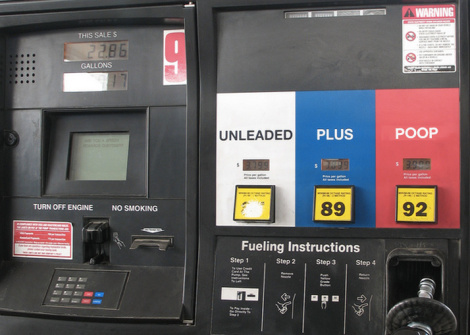Rachel Smolker, Huffington Post
Having spent the past eight years or so of my life fighting back against large-scale commercial and industrial bioenergy, it feels good to finally see the tides turning, albeit slowly, maybe not always for the right reasons, and perhaps too little too late. But consider that in just the past two weeks there have been some remarkable signs that awareness is growing and policies may be slowly shifting. A few examples:
The DC Circuit Court of Appeals ruled against the EPA, stating the agency has no basis for a three-year deferral that would have exempted CO2 from “biogenic” sources (ethanol, biomass, municipal wastes, landfill gases) from greenhouse gas regulations under the Clean Air Act.
The European Union Environment committee voted to cap the percentage that biofuels made from food crops can contribute to their overall target. They also voted to consider default value “ILUC” (indirect land use change) factors in determining the emissions from biofuel production. While these fall far short of the strong steps needed to stem the tide of destruction caused by EU bioenergy policies, they do at least reflect some glimmer of changing opinion.
A growing chorus of voices in the U.S. is calling to cut back the Renewable Fuel Standard. A Senate bill to repeal the mandate was recently introduced. Those calling for repeal may not have the protection of the environment in mind — they include American Petroleum Institute and their ilk, as well as livestock producers and grocery manufacturers contending with rising costs of corn and soy.
More locally, a long-fought battle against the “Pioneer” biomass incinerator in Greenfield Mass., ended in victory for residents who favor clean air and healthy forests over false solutions. Several other biomass incinerators in the state have already been halted or are on hold after regulations were tightened last year.
A judge in Maricopa County Arizona ruled that burning garbage is not “renewable” energy and thus ineligible for subsidies.
And…
Ten-thousand Chinese citizens took to the streets to protest one of the five waste incinerators proposed for Guangzhou, citing threats to their children’s health.
The food crisis helped bring to light the foolishness of using food to fuel cars. We still hear endlessly repeated the simplistic view that the problem will be solved simply by shifting to non-food crops, eventually, if we can figure out how. But common sense tells us that land, water, and fertilizers are all needed whether the crop is edible or not. And those are in ever shorter supply. Meanwhile, as we are plummeting deeper and deeper into climate and weather extreme chaos, the protection of forests and ecosystems, is urgent. Cutting, burning, and clearing our forests and fields to supply massive quantities of plant materials to electric utilities and refineries appears ever more ludicrous and misguided. Think ancient Mayan civilization collapse.
Will visitors from another world sometime in the future arrive here, piece together what happened and marvel at the idiocy that permitted a species to first contaminate its’ life-sustaining atmosphere by burning fossil fuels and digging up and deforesting the landscape — and then tried to remedy the situation by burning what remained?
Let’s hope the story has a happier ending.




